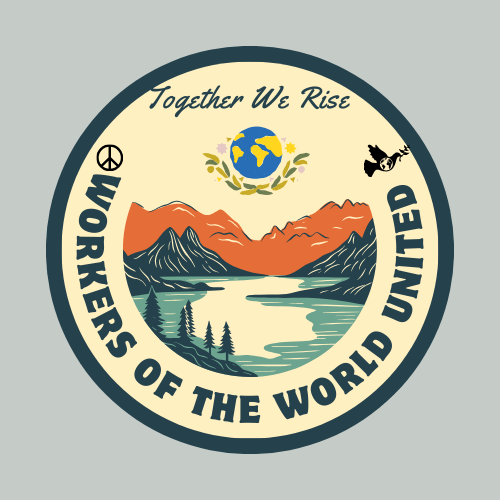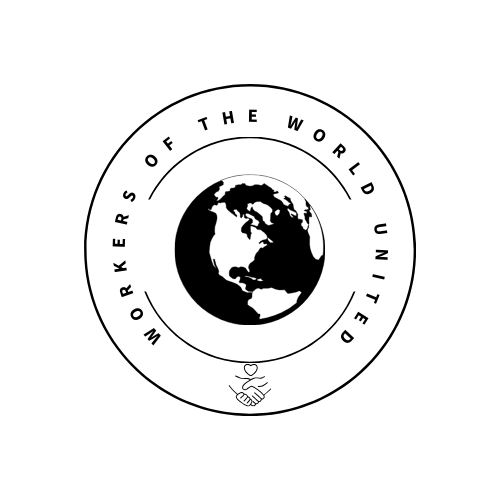
The Origin of Workers of the World Unit and Why It Matters Today
In an era marked by rapid globalization and shifting labor dynamics, the phrase “Workers of the World, Unite!” resonates with a powerful urgency. But where did this rallying cry originate, and why does it hold such significance today? Let’s delve into the history of the Workers of the World Unit and explore its relevance in our contemporary society.
The roots of international worker solidarity can be traced back to the mid-19th century during a time when industrialization was transforming economies across Europe and beyond. Amidst harsh working conditions, low wages, and long hours, workers began to recognize their collective strength.
In 1864, the International Workingmen’s Association (IWA), commonly known as the First International, was formed in London. This organization aimed to unite various labor movements under a common cause: advocating for workers’ rights globally. Karl Marx played a pivotal role in its formation, emphasizing that workers were not merely isolated individuals but part of a larger class struggling against oppression.
As labor movements gained momentum throughout Europe and America, they forged connections that transcended borders. The slogan “Workers of the World, Unite!” emerged from this movement as a call to action—a reminder that regardless of nationality or circumstance, workers shared common interests.
The establishment of trade unions further fueled this sense of solidarity. Unions became platforms for collective bargaining and advocacy for better working conditions. They organized strikes and protests that highlighted injustices faced by workers everywhere.
By the early 20th century, socialist parties around the world adopted these ideas into their manifestos. They recognized that true liberation could only be achieved through international cooperation among workers—hence solidifying the notion that unity is strength.
The concept culminated in events like May Day celebrations worldwide—commemorating labor struggles while promoting solidarity among workers from all walks of life.
Fast forward to today’s interconnected world: we face new challenges that echo those early struggles. Gig economies are on the rise; remote work has blurred traditional boundaries; automation threatens job security for many industries. As these shifts occur, so too does inequality within and between nations.
1. **Globalization:** While it has created opportunities for some, it has also led to exploitation in others—especially in developing countries where labor laws may be lax or nonexistent.
2. **Worker Rights:** Many workers still grapple with inadequate wages and unsafe working conditions reminiscent of past eras. Movements advocating for fair pay reflect historical calls for justice.
3. **Digital Labor Movements:** The rise of digital platforms has given birth to new forms of labor organizing—from online petitions to social media campaigns advocating for rights in gig economy jobs.
4. **Climate Change:** Environmental issues have begun intertwining with labor rights; workers increasingly recognize their role in sustainable practices as they push for green jobs that respect both people and planet.
5. **Diversity & Inclusion:** Modern movements emphasize intersectionality—recognizing how race, gender identity, sexual orientation intersect with class struggle—calling attention to marginalized voices within worker movements.
Understanding the origins of “Workers of the World Unit” serves as more than just a historical lesson; it provides context for current struggles faced by millions globally who seek dignity at work and fair treatment from employers. As we navigate these complexities today—their legacy reminds us: unity remains essential.
So let us carry forth this message into our workplaces and communities! By standing together against injustice—no matter where we hail from—we can honor those who fought before us while paving paths toward equitable futures filled with hope for generations yet unborn!
Let’s continue fighting together because united we stand strong!
Bridal Bliss
Transform your special day with a flawless, long-lasting bridal look. Includes a pre-wedding trial session.
Glam Night
Perfect for parties, proms, and special events. A bold, glamorous makeover designed to turn heads.
Natural Elegance
Achieve a radiant, natural look for everyday occasions or professional shoots. Effortlessly stunning.
Group Glam
Get ready with your crew! Ideal for bridal parties or group events. Includes makeup for up to 5 people.
